With air quality being a key consideration for good health, it is imperative for awareness of environmental health to grow. A critical tool in this regard is an air quality monitor that measures and analyzes air composition in real-time.
This novel technology offers more than just weather forecasts. It provides users with real-time information about pollutants, particulate matter, and several other substances that may be detrimental to health.
In this guide, we will give an overview of the types of air quality monitors on the market and discuss how to select the best air quality monitors in 2024.
Table of Contents
Market share of air quality monitors
Types of air quality monitors
How to select air quality monitors in 2024
Conclusion
Market share of air quality monitors
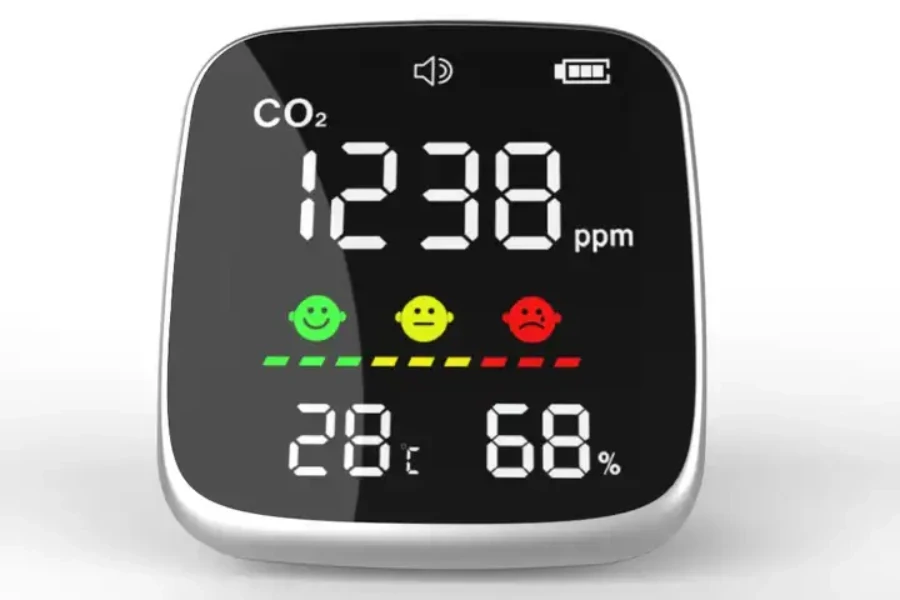
A report published by Research Nester shows that the air quality monitoring system market is rising at its highest pace, which would raise its worth from USD 6 billion to more than USD 16 billion by 2035. This growth reflects an exceptional compound annual growth rate (CAGR) of 10% over the period of 2023 to 2035.
The increased air pollution, awareness regarding the role played by the respiratory system in disease development, and global implementation of environmental standards all promote this market’s growth rate. The trendsetters of this demand are found in North America, Europe, and Asia Pacific. These regions have increased urbanization, industrialization, and emphasis on environmental sustainability which lead to enhanced air quality monitoring needs.
Types of air quality monitors
1. Indoor air quality monitors
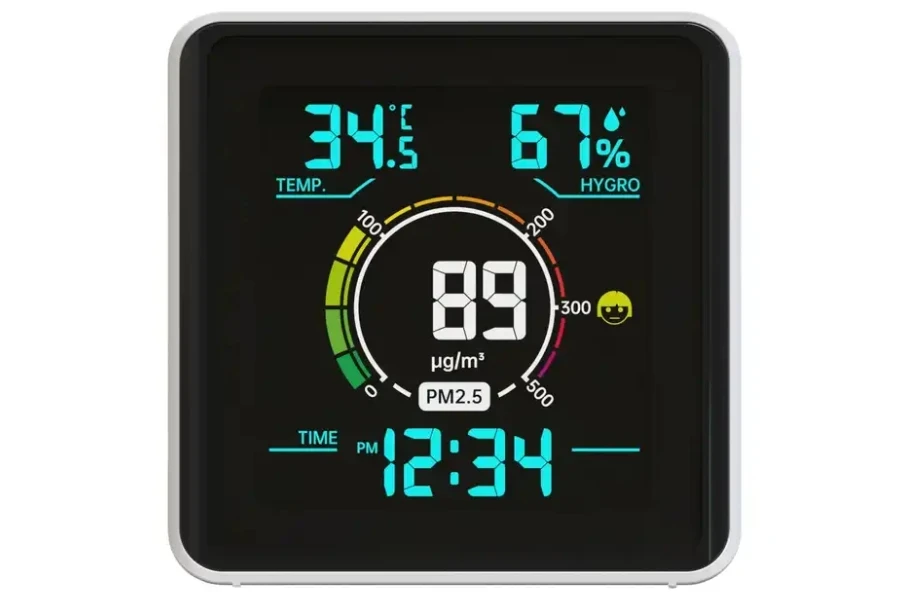
Indoor air quality monitors are primarily meant to evaluate indoor air conditions in houses, offices, and other facilities. Indoor air quality monitors have sensors for measuring VOCs, carbon dioxide, and particulate matter. They offer real-time data to guide users on improving their indoor health. Indoor air quality indicators are usually small, having an informative display and facilitating house installation. Based on the additional features and integrated sensor capacities, their price may lie between USD 50 and USD 300.
These monitors have an accuracy of about 95%. Users can usually connect through Wi-Fi or Bluetooth, tracking air quality information remotely and getting alerts when something gets wrong with the air.
2. Outdoor air quality monitors
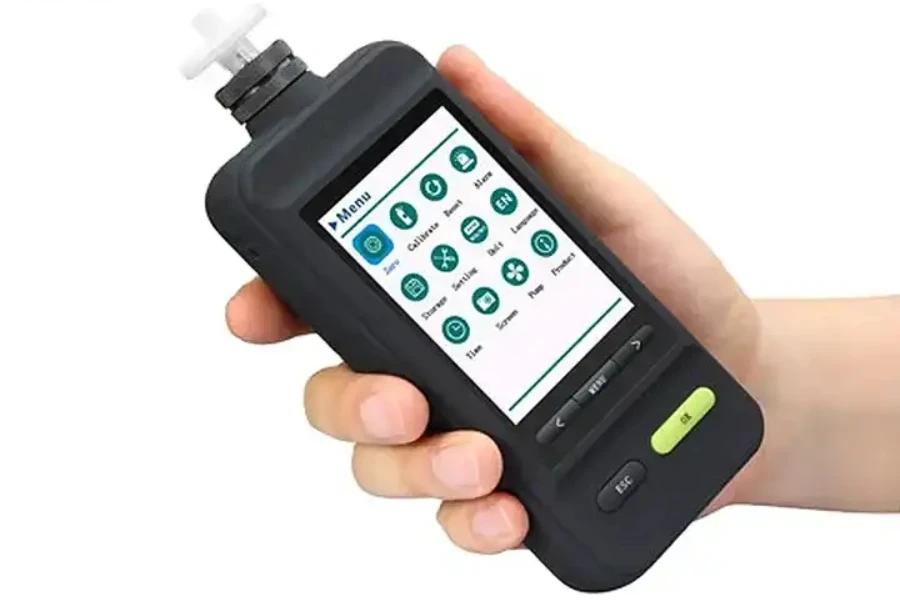
Outdoor air quality monitors gather essential information on open spaces needed for making urban, industrial, or rural area pollution evaluations. These monitors have various sensor technologies for measuring outdoor air pollutants such as nitrogen dioxide, ozone, and particulate matter.
Outdoor monitors are much bigger and stronger than indoor ones, which are built in such a way as to resist different weather conditions. They cost more than USD 500 due to the enhanced capabilities needed in this environmental condition and the device’s sturdiness. These monitors yield highly precise information, generally less than a 2 to 3% margin.
3. Portable air quality monitors
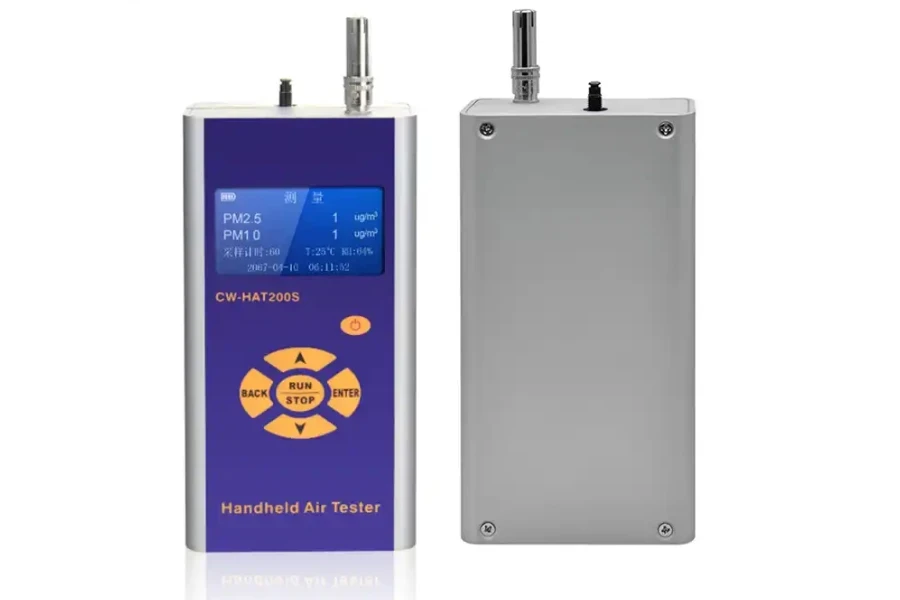
The portable air quality monitors are small and intended for travel, enabling individuals to test the air quality in various locations. Portable monitors feature sensors for common pollutants and provide real-time information. These sensors usually cost between USD 100 and USD 500 based on their capabilities and extra features.
Portable monitors are not as accurate as large stationary models but record reliable measurements with a 5% error rate. Most of these devices have features allowing users to connect via USB or smartphone.
4. Fixed air quality monitors
The fixed air quality monitors provide continuous, long-term monitoring at definite points. These monitors are utilized in industrial settings, urban regions, and close to pollutant sources for reliable information for trend analysis and temporal variation. Stationary monitors are bulky and solidly constructed, incorporating various sensor components that comprehensively assess air pollution.
The cost of a fixed air quality monitor varies between USD 1,000 and USD 10,000 and above based on its complexity and features. They are accurate (about 1 to 2% margin) and sometimes equipped to wirelessly send data onto environmental monitoring systems with network/GSM capability.
How to select air quality monitors in 2024
1. Accuracy
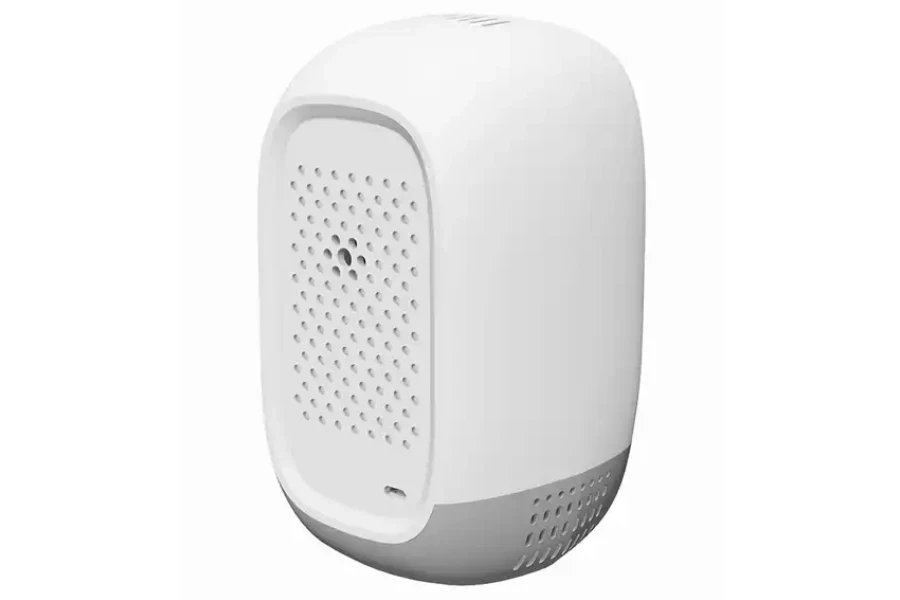
Reliable data collection requires highly accurate and precise air quality monitors. Indoor air quality monitors often have an accuracy of +/-5% margin, ensuring accurate pollutant concentration measurements such as VOCs and PM. Modern outdoor monitoring systems that utilize sophisticated sensor techniques are generally accurate up to 2-3% margin, which can help evaluate atmospheric pollutants and emissions in open areas.
Portable air quality monitors maintain an accuracy of up to 5% margin. The most accurate monitors are the stationary air quality systems fitted with highly sensitive sensors that can read measurements down to about 1 to 2% margin.
2. Price
Reliability and cost efficiency are critical in monitoring air quality, especially in residential and business sectors. Indoor air quality monitors cost between USD 50 and USD 300. Sophisticated outdoor monitors cost from USD 500 to USD 1,000, depending on the degree of environmental monitoring needed. Portable monitor options cost from USD 100 to USD 500 and can balance affordability with mobility. The fixed or stationary air quality monitors cost USD 10,000 or more.
3. Sensor type
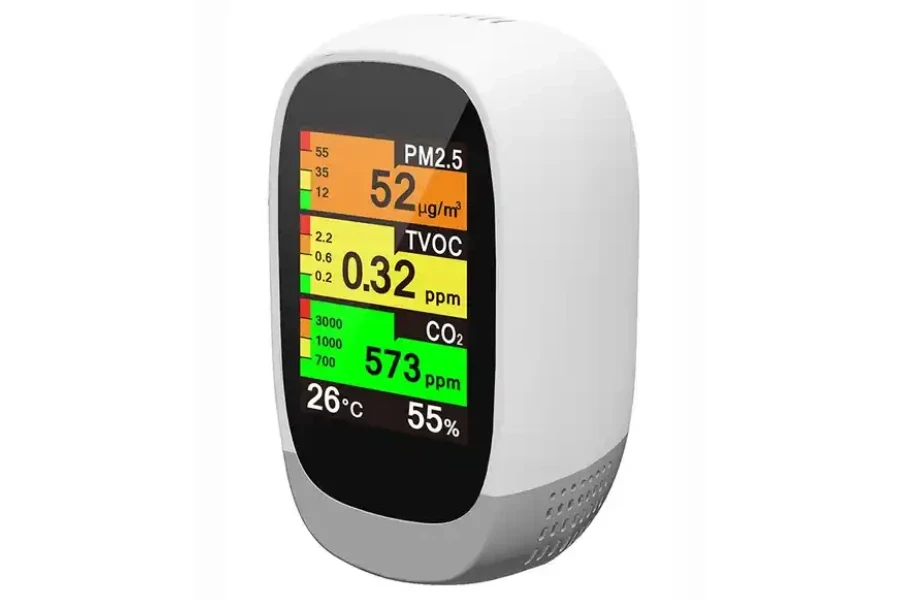
Indoor air quality monitors usually contain sensors for volatile organic compounds (VOCs), particulate matter (PM), and carbon dioxide (CO2). These sensors offer comprehensive insights into indoor air exceptionality. Outdoor monitors utilize Nitrogen Dioxide (NO2), Ozone (O3), and Particulate Matter sensors.
Portable monitors are flexible and encompass sensors for various unusual pollutants, presenting flexibility for diverse settings. Fixed air quality monitors combine several sensors, including VOCs, PM, NO2, and O3, ensuring a complete analysis of air exceptionals in precise places.
4. Range
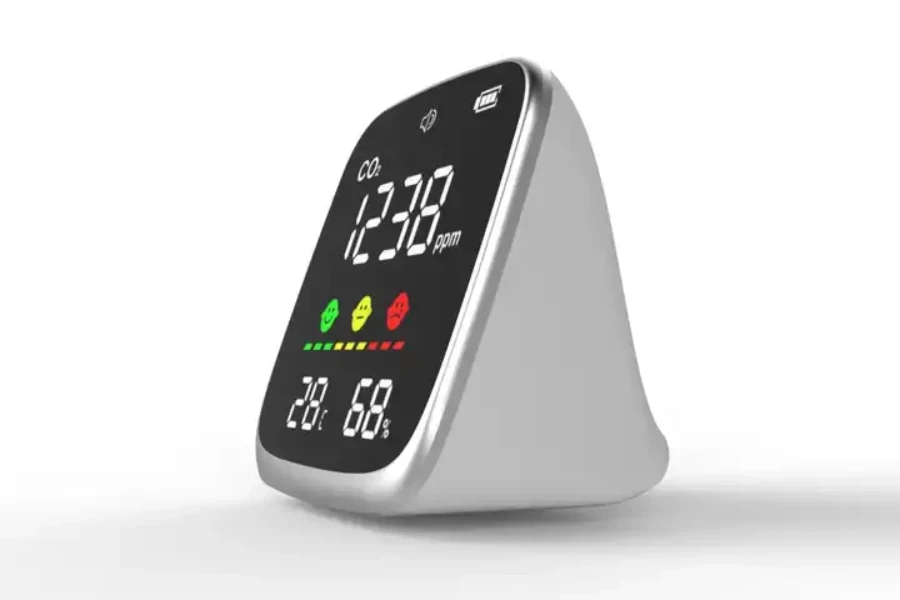
Indoor air quality monitors cover residential and commercial areas, including homes, offices, and schools. Measuring pollutants outside is based on outdoor monitors covering urban, industrial, and rural areas. Some portable monitors provide flexibility in personal space and outdoor activities. Stationary monitors are used because they have extensive ranges of coverage and are therefore able to carry out round-the-clock monitoring within industrial as well as urban settings.
5. Size
Indoor air quality monitors are compact, with dimensions usually starting from 5 to 10 inches, making them appropriate for placement in homes or workplaces. Outdoor monitors are large, 12 to 24 inches, designed to withstand outdoor situations. Portable monitors are pocket-sized, measuring 3 to 6 inches. Fixed monitors are constructed for lengthy deployment and can be larger, ranging from 18 to 36 inches.
6. Connectivity

Indoor air quality monitors often feature Wi-Fi or Bluetooth connectivity, allowing records to be retrieved via smartphones or other smart devices. Outdoor video display units may include wired connections for continuous record transmission. Portable monitors usually offer USB or phone connectivity for statistics to get the right of entry on the move. Fixed monitors might also have advanced connectivity options, which include wired networks or cell connections.
Conclusion
Navigating the selection of the proper air quality monitor requires strategic consideration of accuracy, charge, sensor kind, range, size, and connectivity. With numerous options catering to particular needs, from indoor and outdoor settings to portable and fixed tracking, locating the perfect tool is pivotal for fitness-aware consumers and industry specialists. For a comprehensive array of dependable and budget-friendly air quality monitors, visit Alibaba.com.



